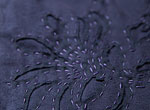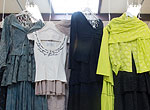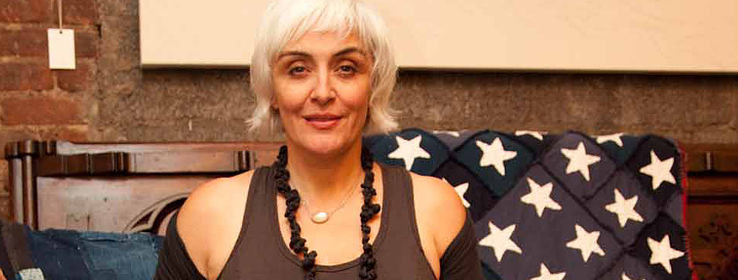Textile and fashion designer Natalie Chanin’s color palette comes from the ground up in her sustainable clothing line, Alabama Chanin.
By Amanda Lecky
When former fashion stylist Natalie Chanin decided to start her own collection, she didn’t do it in Paris, Milan, or even New York, where she was living at the time. Instead, she moved back to her small hometown of Florence, Alabama, bringing her vision for a more environmentally responsible corporate culture with her. Fifteen years later, Alabama Chanin is a model of sustainability and style.
 STIR: How did you start Alabama Chanin?
STIR: How did you start Alabama Chanin?
Natalie Chanin: In the beginning, I had no intention of starting a business. My plan was to create 200 one-of-a-kind shirts to sell during New York Fashion Week. While looking for manufacturers, I realized what I was doing mimicked quilting stitches I’d seen my grandmothers use. So, this idea grew from creating a small capsule collection to the possibility of making more clothing in this same, handcrafted way. That brought me back to my community, which had a rich textile history and was filled with talented seamstresses.
STIR: What’s the role of sustainability in your corporate vision?NC: At its core, this company is about making beautiful products in an ethical way. That means we must be conscientious of our methods and materials. We have to be thoughtful about waste, take care in researching the people and companies we hire to create our products, and take control of how our products are ultimately marketed and sold.
NC: I care very deeply about advancing what I call the “living arts,” those skills once necessary to sustain life but that many of us seem to have lost. I think these “living arts” — including sewing — are equally important as “primary” arts like painting, poetry or sculpture.
 STIR: How would you describe your relationship with color?
STIR: How would you describe your relationship with color?
NC: Something that I learned early on is that color and shape can convey feelings that language cannot. I consider how to use color effectively in each collection to achieve the greatest impact. For instance, tone-on-tone designs delicately reveal elegant stitchwork, where contrasting colored appliques draw the eye to specific design elements.
STIR: Have your Southern roots influenced your use of color?NC: Most designers are influenced by their environment and I’m no different. Red dirt — which is the color of the soil in Alabama — remains one of my first and most steadfast color inspirations. But there are also limitless color inspirations found in the woods, the rivers and the history of my community.
 STIR: Could you describe a color challenge you’re currently working on?
STIR: Could you describe a color challenge you’re currently working on?
NC: When our closest partner dye house closed, we decided to learn natural dyeing techniques ourselves, with the intent of eventually taking over that whole process — and we have now established our own indigo dye house. We are also thinking of creating custom colors of thread to use with the Alabama Chanin line of clothing.





